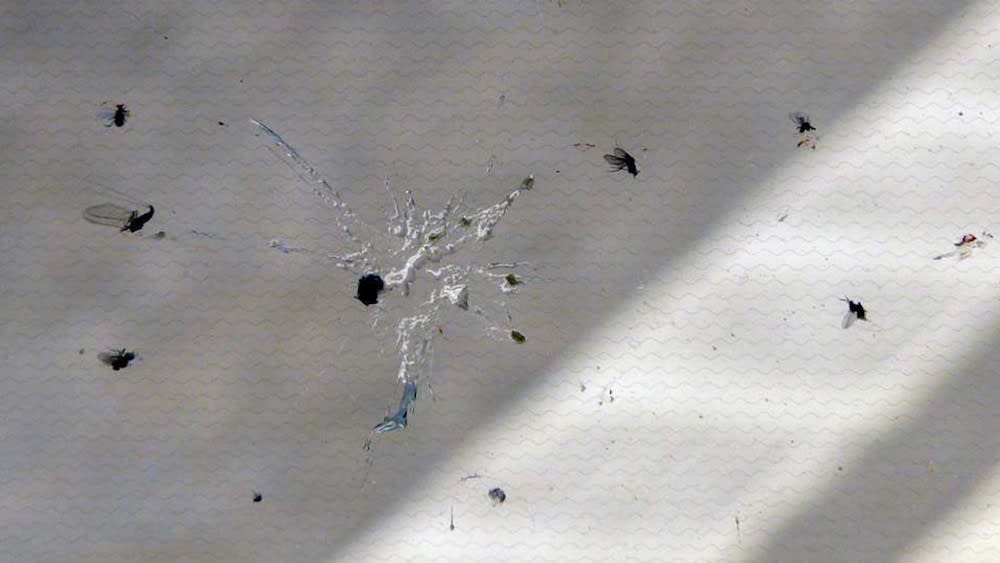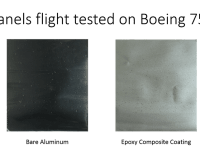NASA Langley Research Center has developed fluorinated alkyl ether containing epoxies designed as an anti-insect coating. The robust and durable coating was developed to improve aircraft efficiency, but the coating could be useful in a variety of applications where reduction of insect residue adherence is desirable, such as in automotive and wind energy industries.
BENEFITS
• Epoxy coatings are fairly inexpensive, widely used, and are simple to apply
• Improved hydrophobicity is demonstrated at low concentrations of the fluorinated aliphatic component (as low as 1wt%) due to preferential migration of the functional groups to the surface of the polymer and incorporation of particle fillers
• Production of the fluorinated aliphatic component is relatively simple, with a commercially available precursor and requiring only two chemical reactions
• Several formulations of this coating technology were flight tested on Boeing's EcoDemonstrator in April and May of 2015
• The technology has been demonstrated and has undergone testing to validate the approach and the resulting coating compositional profile and surface chemistry
to Earth
THE TECHNOLOGY
This technology is a copolymeric epoxy coating that is loaded with a fluorinated aliphatic chemical species and nano- to microscale particle fillers. The coating was developed as a hydrophobic and non-wetting coating for aerodynamic surfaces to prevent accumulation of insect strike remains that can lead to natural laminar flow disruption and aerodynamic inefficiencies. The coating achieves hydrophobicity in two ways. First, the fluorinated aliphatic chemical species are hydrophobic surface modification additives that preferentially migrate to the polymer surface that is exposed to air. Secondly, the incorporation of particle fillers produces a micro-textured surface that displays excellent resistance to wetting. Combined, these two factors increase hydrophobicity and can also be used to readily generate superhydrophobic surfaces.
This technology was invented John W. Connell, Joseph G. Smith, Emilie J, Siochi, Frank L. Palmieri, Christopher J. Wohl all of NASA Langley Research Center and John M. Garner of the National Institute of Aerospace; Patent Number 9,550,911, issued January 24, 2017
Like this entry?
-
About the Entrant
- Name:Kimberly Middleton
- Type of entry:teamTeam members:John W. Connell (NASA LaRC) Joseph G. Smith (NASA LaRC) Emilie J, Siochi (NASA LaRC) Frank L. Palmieri (NASA LaRC) John M. Garner (N(A) Christopher J. Wohl (NASA LaRC)
- Patent status:patented








